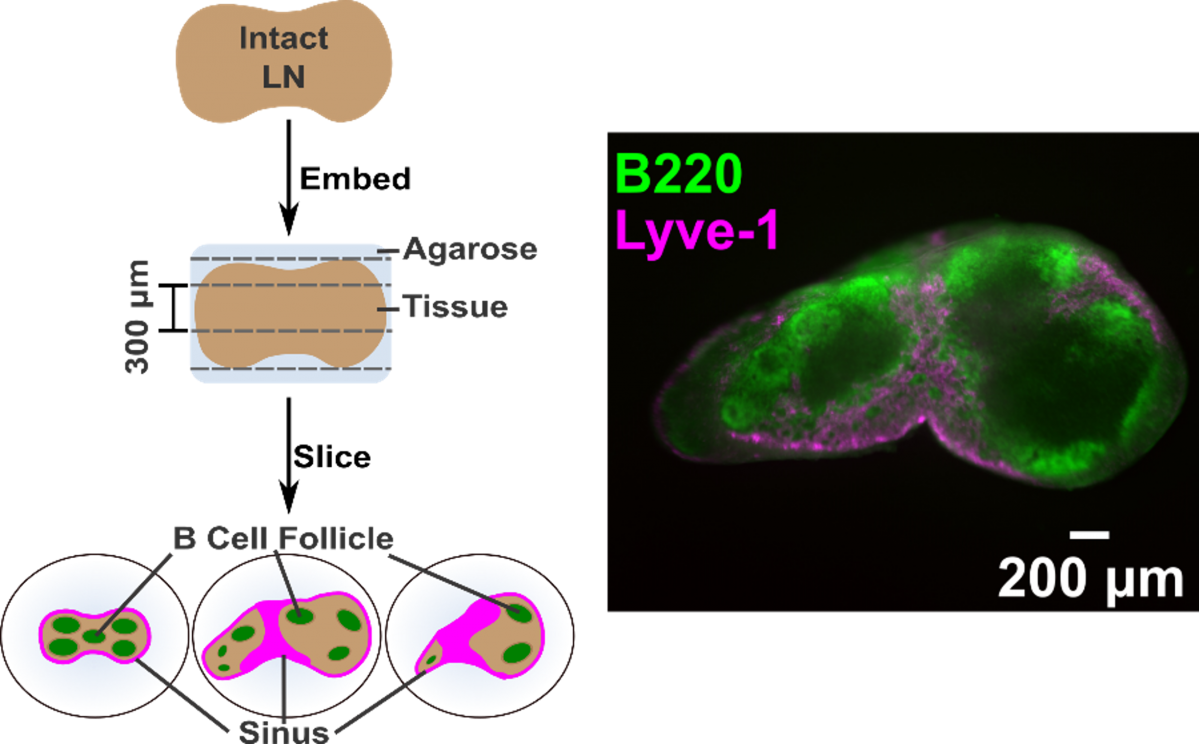News

Pompano Group: Studying Immunity Through Lymph Nodes
By: Amelia Reid, UVa ChemSciComm
A key aspect to understanding immune responses from vaccines, infectious diseases, cancer, or autoimmunity is to study responses in the lymph node. Lymph node structures are complex with at least three distinct regions that communicate with each other in order to produce an immune response. This communication can occur through direct physical contact between cells or indirectly through chemical signals, indicating a relationship between the structure of the lymph node to the immune response that it produces. Typically, studies are limited to the imaging of live tissues (in vivo) or the culturing of lymphoid cells (in vitro). In vitro cell cultures allow for the lymphatic cells to be studied during an immune response, but the importance of the structure of the organ is lost. In vivo imaging studies allow for the structural properties of the lymph node to be retained, but it is difficult to visualize and analyze all the processes occurring in a live organ.
In order to address the disadvantages of traditional methods, Dr. Rebecca Pompano and co-workers at the University of Virginia have recently developed a new method for imaging live organ structures outside the body (ex vivo) to study lymphatic immune responses. Ex vivo imaging allows for structural features of the organ to be retained while enabling more direct measurements of the chemical signaling response. In a typical experiment, live ex vivo lymph node slices are exposed to small molecules which simulate an immunoresponse (e.g. vaccine or infectious disease) and monitored. This method was inspired by previously developed methods to study the tissues of other organs such as the brain, heart, and lungs.
The results of this study showed that the new ex vivo method could reproduce results from in vivo and in vitro methods in a simultaneous measurement, demonstrating the analytical power of this technique. Importantly, the live organ slices remain viable ex vivo over the course of 24 hours, which will enable the interrogation of immune response over longer time periods than previously possible in future studies. Although this new method comes with many benefits, they are quick to point out some of challenges that remain, such as variation in the slices, the isolation of live tissue from the complete immune system, and lack of control over drug entry points. Considering all of the advantages and disadvantages of this method, Dr. Pompano and co-workers are “optimistic that live lymph node slices will provide a novel platform that will add to the immunologist’s tool box as a supplement to traditional experimental models.”
